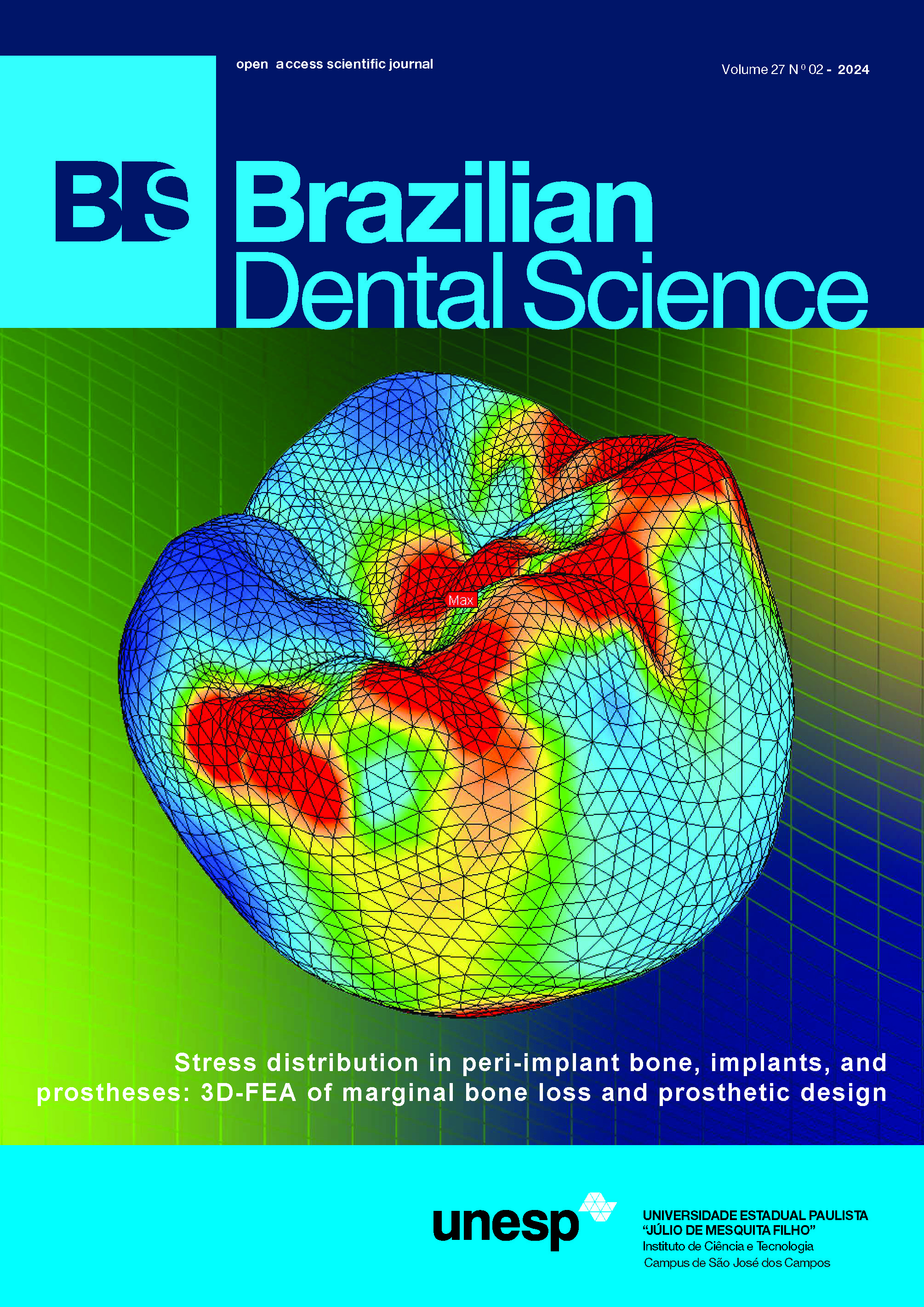How reverse planning and the use o digital devices revolutionize implantology? – Case report
DOI:
https://doi.org/10.4322/bds.2024.e4327Resumo
Objectives: The aim of the study was to demonstrate how digital devices can be applied in the field of implant dentistry. By integrating data from computed tomography, panoramic radiography, and intraoral scanning into software, it is feasible to perform virtual planning of prosthetic rehabilitation and implant placement predictably. The adoption of reverse planning increases the chances of treatment success. Material and Methods: In this case report, oral rehabilitation of the area of tooth 36 was conducted through implant placement. The implant was installed based on the virtual planning done in the software, followed by the production of a rigid static guide and guided surgery. Results: It was noted that there is a learning curve associated with the use of these technologies, requiring professionals to have theoretical and practical knowledge of digital devices. By using software and surgical guides obtained through 3D printing, it was possible to achieve high precision and preserve vital structures such as blood vessels and nerves, resulting in aesthetic and functional satisfaction for the patient. Conclusion: The use of digital devices in implant dentistry offers speed and predictability in treatment.
KEYWORDS
CAD/CAM; Dental planning; Dental prosthesis; Guided surgery; Implant.
Downloads
Downloads
Publicado
Como Citar
Edição
Seção
Licença
TRANSFERÊNCIA DE DIREITOS AUTORAIS E DECLARAÇÃO DE RESPONSABILIDADE
Toda a propriedade de direitos autorais do artigo "____________________________________________________________________" é transferido do autor(es) para a CIÊNCIA ODONTOLÓGICA BRASILEIRA, no caso do trabalho ser publicado. O artigo não foi publicado em outro lugar e não foi submetido simultaneamente para publicação em outra revista.
Vimos por meio deste, atestar que trabalho é original e não apresenta dados manipulados, fraude ou plágio. Fizemos contribuição científica significativa para o estudo e estamos cientes dos dados apresentados e de acordo com a versão final do artigo. Assumimos total responsabilidade pelos aspectos éticos do estudo.
Este texto deve ser impresso e assinado por todos os autores. A versão digitalizada deverá ser apresentada como arquivo suplementar durante o processo de submissão.




























